
Here is a benign looking grib file (Playa Francesa, where we are anchored,is off the tip of the northeastern island). The GFS model, usually pretty accurate, is saying 10 to 15 knots. if we were in the open ocean it would probably be OK. But there is a large island immediately to windward of the anchorage, and the weather models typically do not do well with the affect of land masses on local weather.
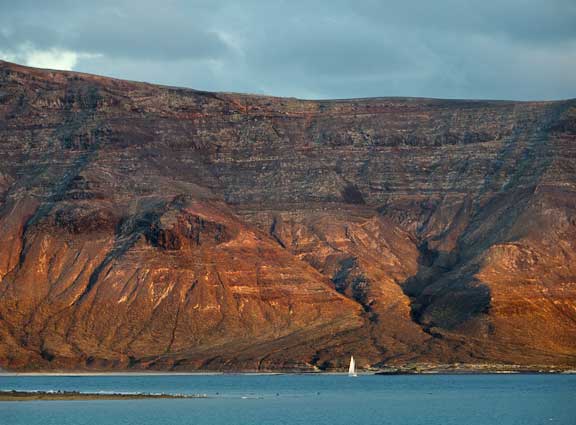
When the breeze humps over a mountain like this it can create a calm in its lee, accelerate the wind and bring it down to the surface, or both, which is what happened last night at 0300, when we started seeing gusts in the 35 to 40 knot range.
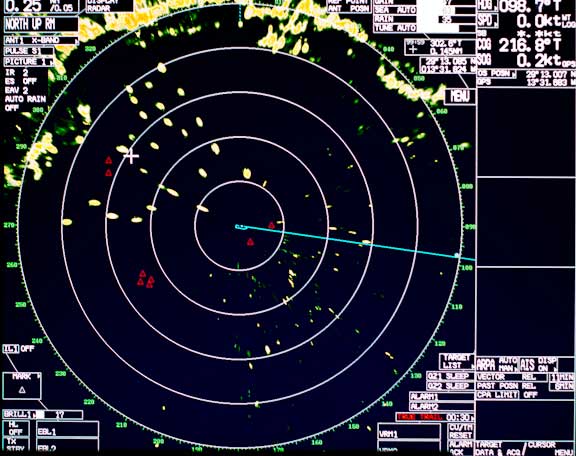
Here is radar picture at anchor in Playa Francesa. We are the outermost boat, with easy escape should we choose to exit in the dark.The radar is in north up,set on 1/4 mile range, and we are pointing 97 degrees.
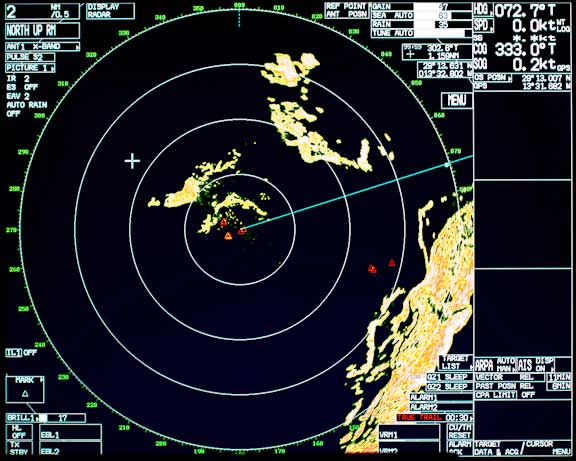
A few minutes later, now on two mile range, shows Lanzarote to the east. The two red triangles across the way mark our previous anchorage in the lee of the mountains.
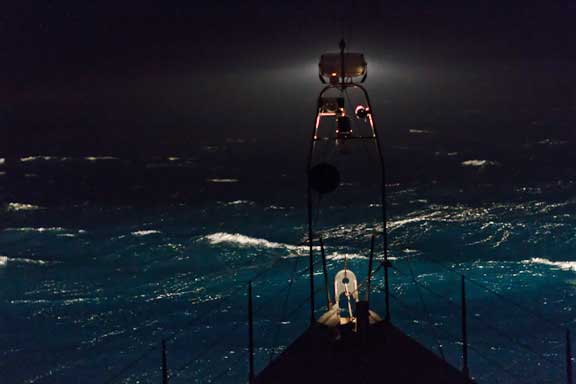
Sitting inside, insulated from wind noise, with little motion, it is easy to loose situational awareness. Thirty knots, gusting 40 is not that big a deal. But turn on the bow floodlight to check the waves and a different picture emerges. Although there is less than two miles of fetch occasional three to four foot (.9/1.2m) waves are rolling in.
We pay the weight and windage penalty of the bow floodlight for just this sort of situation. Its main function is checking waves offshore, but it works at anchor too! It is used secondarily looking for debris in areas like Puget Sound, and on rare occasions to illuminate an anchorage we are working into at night.
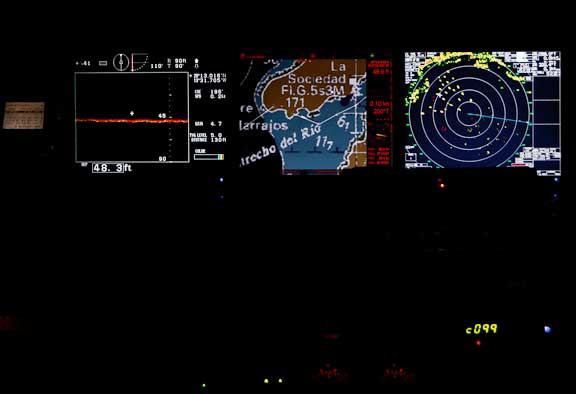
Once we realize how much sea is running we warm up the engines. Thinking about our booms sticking out and some of the boats close behind possibly needing to depart, we decide to make the first move.
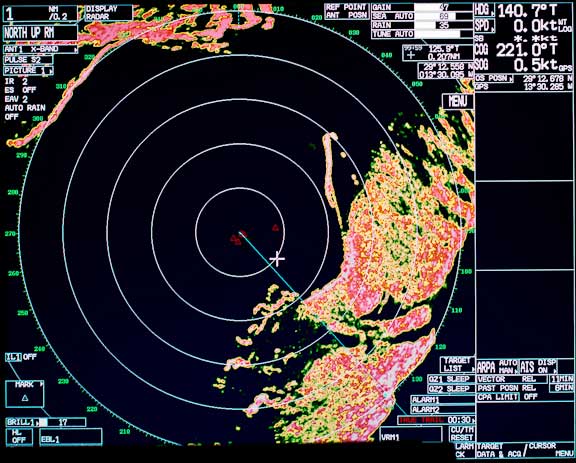
Twenty minutes later we are across the channel. The chop is gone, we’ve got a good bite in 16 feet (5 meters) at low tide.
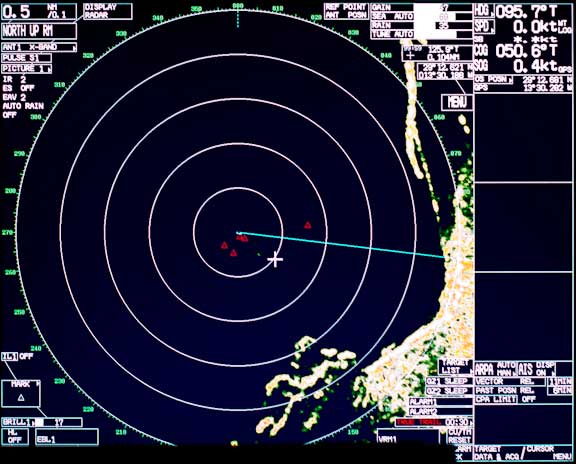
There is an occasional north swell wrapping in and hitting us on the beam. If we move in closer, into ten feet (three meters) of water we could get out of the swell. But we like it better with a little more distance between our bottom and the seabed.
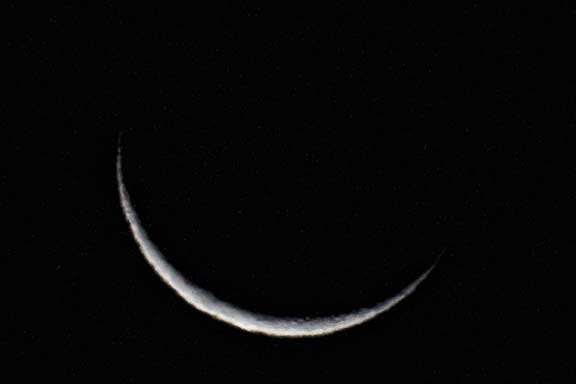
As we are securing the engines the moon begins its ascent over the mountains. This photo from a moving deck does not do the scene justice. The full disc of the moon is outlined as are the mountain ramparts. The image is breathtaking.
Wind Horse is now anchored securely and we are going back to bed.

That last statement is inoperative. We have neighbors arriving and wonderful photo opportunities with the early morning light.
As the land heats up it creates thermals which mix the upper level winds with lower, creating even more powerful gusts than the orthographic features of the terrain alone. We are seeing 35 to 45 knots now, with occasional sheets of spray. Enjoyable if you are connected to the bottom with ground tackle you trust.
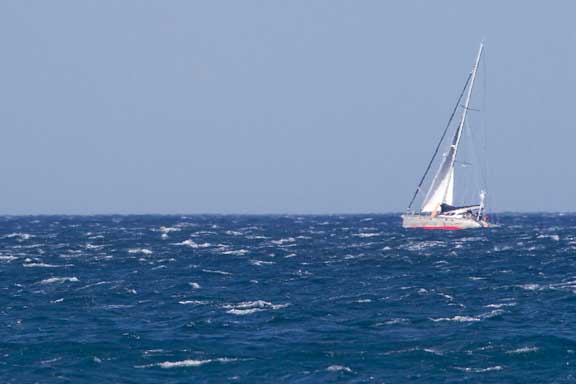
A few of the boats are sailing off to the south.
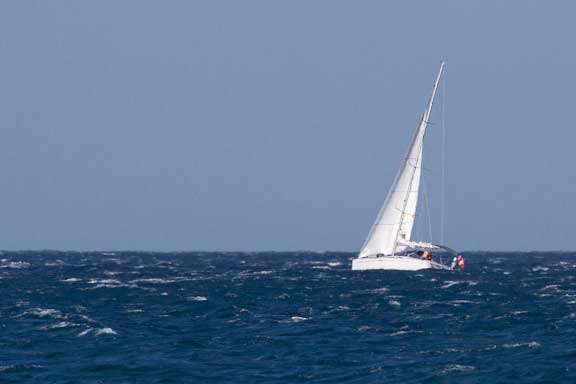
There is a good chance a few miles down the coast it will be calm.
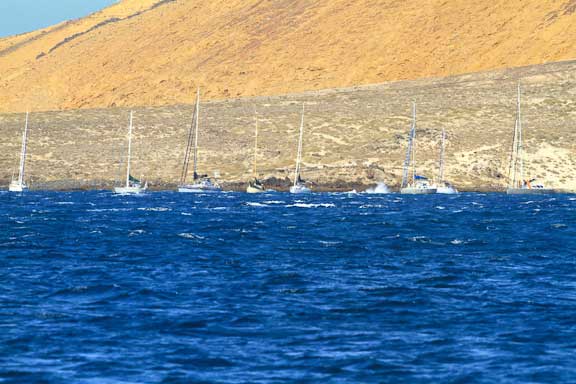
Looking back across the channel Francesa is anything but smooth. We are wondering why folks are waiting to leave.
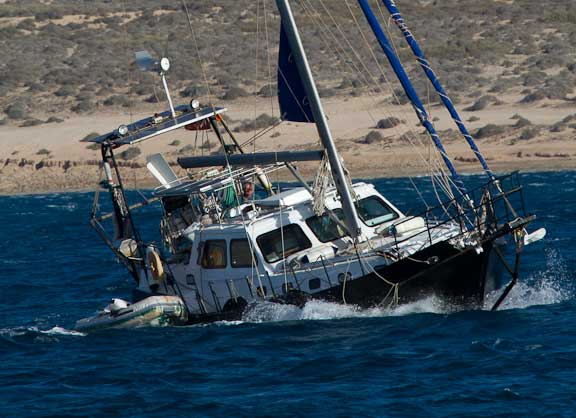
The trip across the channel is short and while it is windy and somewhat bouncy here too, there is no lee shore at our backs.

Most of these photos have been taken with the 500mm F4 telephoto lens.
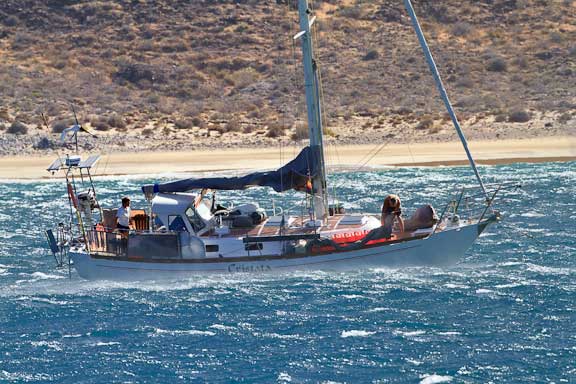
Cristata has just arrived. They have been cruising sixteen years.
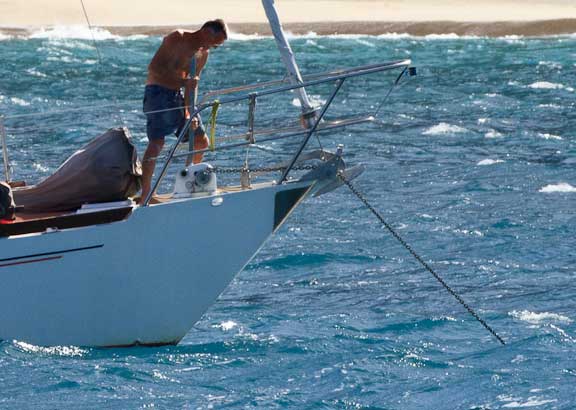
And still using their hand windlass. Note the operator’s physique.
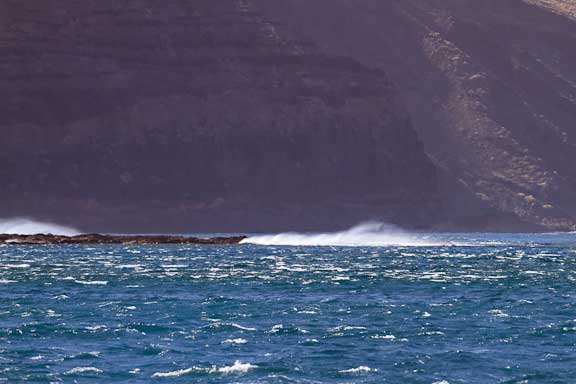
There are wonderful plumes of spray from the beach break.
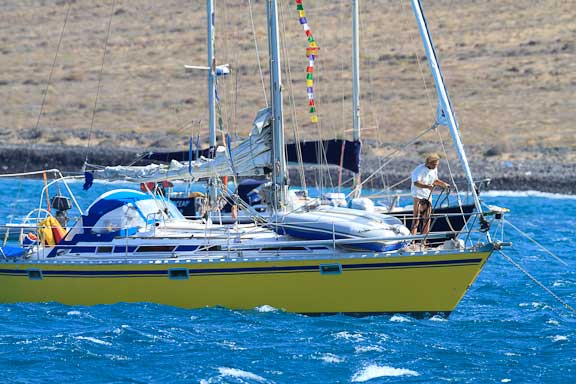
All the boats around us are making periodic checks of their snubbers.
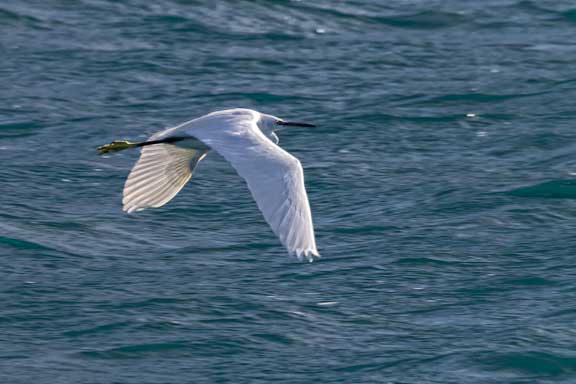
We are surprised to see this egret out for a morning flight, staying a wingspan from the water, making good time to weather too.

And then a shearwater using its fly/paddle technique for best VMG.
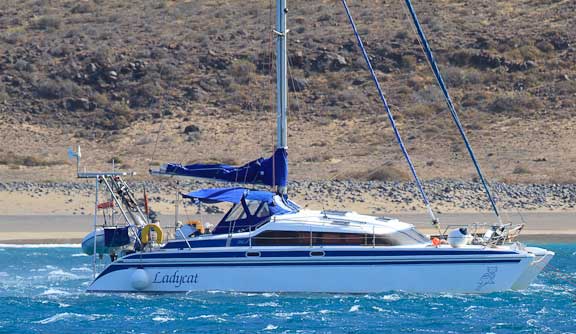
Ladycat, with its aft mast, is sitting quietly while the rest of us sail a bit on our anchors.
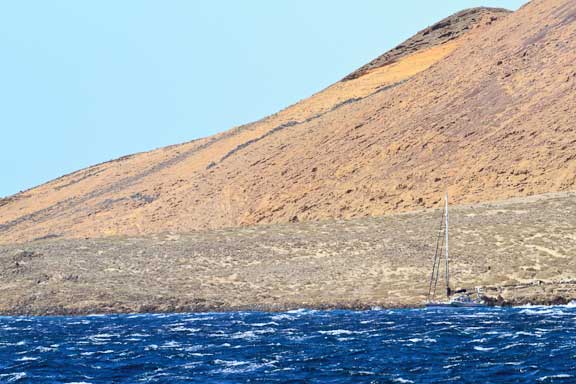
All our neighbors from Playa Francesa are here now with one exception. We are going to have pasta for lunch, followed by (pick one) apple or sour cream coffee cake (both topped with whipped cream) and then we are going back to bed!
Post script: we just heard from Cristata that they had a gust of 49 knots. Hurray for big anchors.

November 4th, 2010 at 10:39 am
GREAT SHOTS, STEVE!
November 4th, 2010 at 7:31 pm
Steve & Linda,
Just curious – do you typically use a nylon snubber as you’re ‘supposed to’, or do you leave the chain on a hinged stopper for these occasions so you can do all the anchoring from inside? I suppose either way you’ve got to go back out to the bow to reset the stopper…just wondering how wet and wind-blown you’re getting compared to most.
Keep up the good work, and stay safe.
-Chris
November 4th, 2010 at 10:08 pm
Hi Chris:
When we use a snubber it is three strand nylon for stretchiness. However, we prefer not to use one if there is any chance we may want a quick exit as removing the snubber adds a few minutes to the departure cycle.
November 4th, 2010 at 7:54 pm
Just outstanding!
Your photos and commentary make it so easy for us to live in your moment
Thanks
Warren
November 4th, 2010 at 10:11 pm
Jim, Kent, Warren:
Thanks for the encouragement. We love the photographic process and it is fun being able to share the experience of cruising.